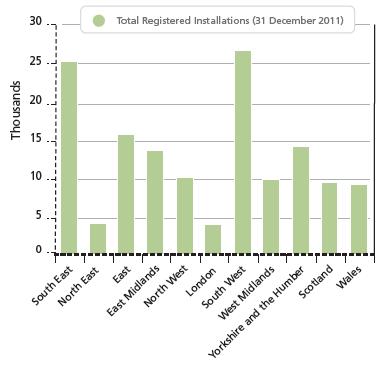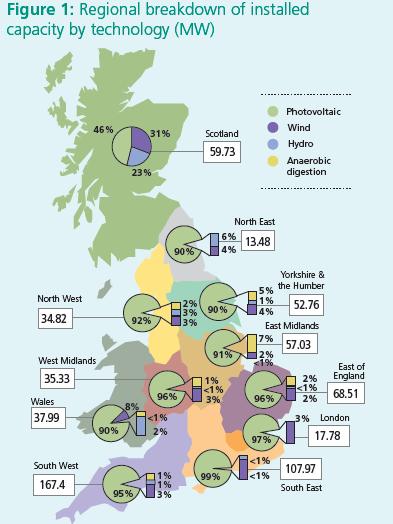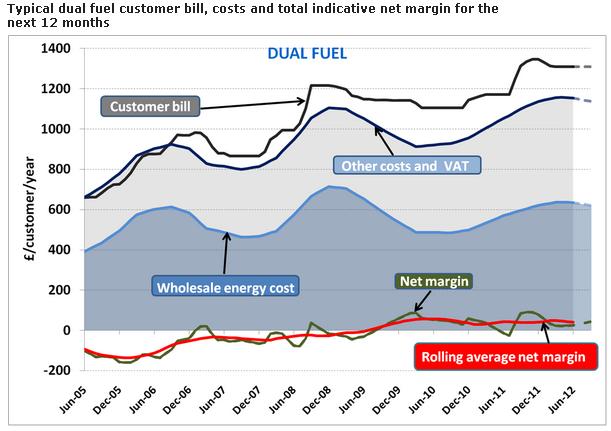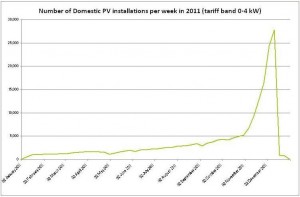Site search:
-
What’s new?
Energy for London Tags
Brent Buildings Camden Carbon Emissions CHP Cities Climate Adaptation Community Heating Community Initiatives Croydon Data DECC Decentralised Energy Distribution ECO Energy Costs Energy Efficiency Enfield FIT Fuel Poverty Funding Green Deal Hackney Haringey Housing Islington Lambeth Library Local Authorities Mayor Newham Ofgem Olympics Photovoltaics Planning RE:FIT RE:NEW Renewable Energy Retrofit Southwark Tower Hamlets Transport Waltham Forest Waste WestminsterEnergy Archives:
- February 2021 (1)
- January 2021 (15)
- December 2020 (15)
- November 2020 (9)
- October 2020 (3)
- August 2020 (5)
- July 2020 (3)
- June 2020 (4)
- April 2020 (10)
- March 2020 (5)
- February 2020 (2)
- January 2020 (3)
- October 2019 (1)
- September 2019 (4)
- August 2019 (2)
- July 2019 (1)
- August 2018 (1)
- November 2016 (8)
- October 2016 (8)
- September 2016 (2)
- August 2016 (8)
- July 2016 (14)
- April 2016 (12)
- March 2016 (16)
- February 2016 (8)
- January 2016 (4)
- December 2015 (1)
- November 2015 (1)
- October 2015 (16)
- September 2015 (3)
- June 2015 (1)
- May 2015 (1)
- April 2015 (1)
- March 2015 (1)
- February 2015 (1)
- January 2015 (1)
- December 2014 (18)
- November 2014 (4)
- August 2014 (8)
- July 2014 (7)
- June 2014 (25)
- May 2014 (8)
- April 2014 (4)
- March 2014 (12)
- February 2014 (7)
- January 2014 (13)
- December 2013 (11)
- November 2013 (15)
- October 2013 (15)
- September 2013 (18)
- August 2013 (5)
- July 2013 (20)
- June 2013 (33)
- May 2013 (8)
- April 2013 (16)
- March 2013 (25)
- February 2013 (14)
- January 2013 (20)
- December 2012 (23)
- November 2012 (23)
- October 2012 (25)
- September 2012 (14)
- July 2012 (12)
- June 2012 (43)
- May 2012 (20)
- April 2012 (8)
- March 2012 (40)
- February 2012 (39)
- January 2012 (40)
- December 2011 (22)
- November 2011 (40)
- October 2011 (33)
- September 2011 (48)
- August 2011 (40)
- July 2011 (58)
- June 2011 (41)
- May 2011 (80)
- April 2011 (38)
- March 2011 (33)
- February 2011 (25)
- January 2011 (24)
- December 2010 (3)
- November 2010 (7)
- October 2010 (6)
- September 2010 (7)
- August 2010 (1)
- July 2010 (2)
- June 2010 (4)
- May 2010 (1)
- March 2010 (3)
- February 2010 (3)
- December 2009 (5)
- November 2009 (2)
- October 2009 (3)
- July 2009 (3)
- June 2009 (1)
- April 2009 (1)
- March 2009 (1)
- February 2009 (1)
- January 2009 (1)
- December 2008 (2)
- October 2008 (1)
- September 2008 (1)
- July 2008 (1)
- March 2008 (2)
- January 2008 (2)
- October 2007 (1)
- September 2007 (3)
- July 2007 (1)
- March 2007 (1)
- February 2007 (3)
- November 2006 (3)
- August 2006 (1)
- February 2006 (1)
- May 2005 (1)
- February 2004 (1)
Tag Archives: Ofgem
Factsheet on Energy Bills
June 2012: Ofgem factsheet providing a useful update and breakdown of what makes up an average energy bill.
Information in relation to the ‘supplier margin’ – that is the profit made by energy customers per customer made across different fuel types – is also published on a regular basis by Ofgem in their ‘Electricity and Gas Supply Market Indicators‘ paper. This highlights that Ofgem’s “estimates also show that for the 12 month period from June 2012 up to and including May 2013 the total indicative net margin for a typical, standard tariff dual fuel customer will be approximately £30 per customer.”
Energy & Climate Questions to the Mayor
June 2012: This month the Mayor has been asked questions in relation to: whether the Mayor will look to establish a London energy cooperative; an update on the Mayor’s carbon reduction policies; whether the Mayor will move to developing a single environment strategy; the Mayor’s activities on supporting electric vehicles in the capital; list of buildings under the RE:FIT scheme; an update on the number of homes treated under RE:NEW; delivery of RE:NEW to the over 60s; and jobs created under the Mayor’s RE:NEW and RE:FIT programmes.
Previous questions to the Mayor can be found here.
Updated FIT Tariff Table
May 2012: Following today’s announcement by DECC over changes to the FIT programme for photovoltaics, Ofgem have published a table which sets out the tariff rates for the Feed-in Tariff scheme from 1 August 2012, for non-PV installations only. Download here.
Low levels of FIT activity in London
March 2012: Energy regulator Ofgem have just issued their latest quarterly report on the progress of Feed in Tariff (FIT) installations across the UK, providing details up to the end of 2011. As reported in a previous post, the last few months of 2011 has seen tremendous activity in relation to photovoltaics, due to the reduction in the support tariff levels from Government. The newsletter highlights that as at 31 December 2011, a total of 147,112 renewable installations have been registered under the scheme since 1 April 2010 (when the scheme started) of which, more than 65,000 installations were registered within the last three months.
Continuing from previous quarters, Ofgem report that photovoltaic (PV) installations continue to represent the vast majority of newly registered installations at over 99 percent of all installations registered between 1 October and 31 December 2011.
Ofgem fortunately also provides a regional breakdown of installations, which highlights a disappointing level of activity in London. In terms of the number of FIT installations, London appears to come at the bottom – just equal or below to the North East – with around 4,000 installations – significantly below all other regions (apart from the North East) – and only 1/6th as much as the best performing region. This number of installations in London represents less than 3% of the total as at December 2011.
 Ofgem also helpfully provide the following regional generation capacity breakdown:
Ofgem also helpfully provide the following regional generation capacity breakdown:
 Of the total 661.07MW of of generation capacity registered under the FITs scheme since 1 April 2010, London has the second lowest level of installed capacity at 17.78MW – just 2.7% of the total (only the North East is lower – a region which does after all have lower levels of insolation).
Of the total 661.07MW of of generation capacity registered under the FITs scheme since 1 April 2010, London has the second lowest level of installed capacity at 17.78MW – just 2.7% of the total (only the North East is lower – a region which does after all have lower levels of insolation).
No analysis has been undertaken as yet to why some regions have been more successful than others, or what have been the key factors to the uptake of PVs. London certainly seems to have an active number of solar companies working within the capital and would have significant roof space, both domestic and non-domestic, that would be suitable for the installation of PVs. The high density of rented accommodation (as opposed to owner-occupiers) in London and typically higher costs associated with scaffolding may have been contributing factors. However, it is unlikely that they are the key determining factors in relation to identifying London’s poor performance.
Latest FIT statistics for London
9 January 2012: Ofgem have just produced their latest quarterly detailed spreadsheet providing data on FIT installations across the UK. The spreadsheet now documents information on an impressive 147,114 entries of schemes installed across the UK since the beginning of the scheme!
Filtering the Ofgem spreadsheet to provide London-only data highlights that:
- 4,053 FIT schemes are installed in London as at 31 December 2011 (2.75% of the total UK schemes installed)
- These represent a total of 11.2 MW of electricity capacity installed
Additionally – the latest update on the number of photovoltaics (PVs) installed nationally (a regional breakdown not provided) is available via DECC’s weeks PV statistics (dated 5 January 2012). The 16 December deadline date set by Government – after which installations would face a major reduction in the subsidy support from the FIT mechanism – clearly had a dramatic effect as the graph from the statistics illustrates:
RHI FAQ
December 2011: Ofgem question and answer factsheet providing assistance to applicants who intend to apply for the Renewable Heat Incentive (RHI) Scheme.
Further Details on the Roll out of CESP in London
28 September 2011: Ofgem’s recent Community Energy Saving Programme (CESP) Update newsletter provided only limited detail in relation to the progress energy companies are making in rolling out efficiency measures in areas of low income, a key requirement of the CESP targets. CESP, which is funded by an obligation on energy suppliers and electricity generators, is expected to deliver up to £350m of efficiency measures by December 2012, the programme’s termination date.
Ofgem have now provided Energy for London some additional information to help better understand the progress of CESP in the capital.
The Update newsletter mentioned that 9 CESP schemes have been proposed in London, out of a total of 201 proposed schemes across the UK.
- Ofgem have now confirmed that, to date, only two London schemes have been approved, in Barking and Dagenham, and in Westminster, and a further 16 have been submitted, awaiting approval.
The Update newsletter highlighted that 1047 energy efficiency measures were installed in 751 dwellings. Ofgem have provided to Energy for London a breakdown of theses 1047 energy efficiency measures as at 30 June 2011:
- Cavity wall insulation – 198
- External solid wall insulation – 342
- Glazing – 18
- Replacement boiler – 78
- Heating controls – 197
- Fuel switch – 119
- Solar PV – 95
- Total – 1047
DECC’s ‘Areas of Low Income’ document sets out that a total of 795 areas are identified as qualifying areas for CESP out of a total of 3248 in England: that is 25 per cent of the eligible areas for the programme in England are in London.
Posted in Energy Efficiency, News
Tagged CESP, Energy Efficiency, Fuel Poverty, Ofgem
Leave a comment
FIT Update Newsletter
26 September 2011: Ofgem’s latest Feed in Tariff Newsletter (issue 5) provides detail on renewable installations across the UK. London data shows that 4.4MW of renewable generation has been installed through the FIT programme in London, virtually of which (99%) is photovoltaic. As compared to other regions, London has the second lowest number of registered FIT installations (around 1,700) and second lowest amount of generation installed. The greatest number of FIT schemes installed are in the South East, South West and Scotland, where 6-7 times the amount of renewable capacity of that in London has gone ahead.
CESP Update for London
7 September 2011: Ofgem’s half yearly update (to the end of June 2011) on energy companies progress against their targets under the Community Energy Savings Programme (CESP) has just been published. However, the results provided in the update only refer to the 201 UK-wide ‘proposed‘ schemes, as opposed to the schemes actually ‘approved’ by Ofgem. With reference to London, the CESP update reports that 15 schemes have been proposed. In terms of actual measures delivered, London schemes in operation (an unknown number), have installed 1047 measures in 751 dwellings. The CESP Annual Report published earlier this year noted the slow progress of the programme to date: the update goes on to highlight the difficulties in getting schemes of the ground as even if all of those proposals put forward by energy companies to Ofgem for approval came to fruition,they would only represent around 50% of the CESP target, with only just a year left of the programme to go.
Posted in Energy Efficiency, Library, News
Tagged CESP, Energy Efficiency, Fuel Poverty, Ofgem
Leave a comment
Connecting Decentralised Energy to London’s Electricity Network
September 2011: Back in May Ofgem issued an ‘open letter’ requesting views from the distributed generation (also commonly called decentralised generation) industry of their experience of connecting projects to the local electricity network. Ofgem’s letter sets out that they:
“consider that the efficient development of distributed generation could play an important role in addressing a number of key policy issues. These include helping the UK to achieve its targets for reduced carbon emissions as well as improving the security of energy supply and addressing fuel poverty issues. To this end, we have endeavoured to ensure that those seeking to connect distributed generation to the network do not encounter any unnecessary barriers resulting from the way that the electricity distribution networks are operated and regulated.”
The increased use of decentralised energy is a key element of London’s energy strategy, and the Mayor has established a target for 25% of London’s heat and power to be sourced by localised DE schemes by 2025.
Ofgem have now published a useful ‘High Level Summary’ of responses which highlights the difficulities that DE operators experience when bringing forward a project. This includes the:
- Limited and inconsistent distribution network data available to generators
- Costly processes ranging from connection assessments to legal fees
- Prohibitively complex grid code requirements placed on these smaller distributed generation systems.
No regional aspects are highlighted in the findings – that is – is it any harder/easier to connect DE to London’s electricity distribution system (operated by UK Power Networks in the main and also SSE in SW London) than anywhere else, however, if London is to significantly increase its use of DE, the numerous barriers identified by smaller generators that currently exist need to be removed.
Posted in Decentralised Energy, Library, News
Tagged CHP, Decentralised Energy, Distribution, Ofgem, UK Power Networks
Leave a comment
Latest Guidance for FIT Generators
August 2011: Ofgem document for renewable generators with a capacity over 50kW up to 5MW that want to benefit from the Feed-in Tariff (FIT) scheme. It provides an overview of the scheme’s eligibility criteria and explains the process of seeking accreditation.
A Simple Guide to the Renewable Heat Incentive
July 2011: Ofgem have just issued a leaflet setting out the key aspects of the Renewable Heat Incentive scheme for prospective participants. DECC have yet to announce the start of the Renewable Heat Premium Payment (RHPP) – a subsidy for a range of renewable heat technologies that can be used in homes – which will be used as a bridge until the full domestic-sector RHI kicks off in October 2012 alongside the Green Deal. This Ofgem brochure just mentions that “DECC will release further information about the RHPP shortly.”



